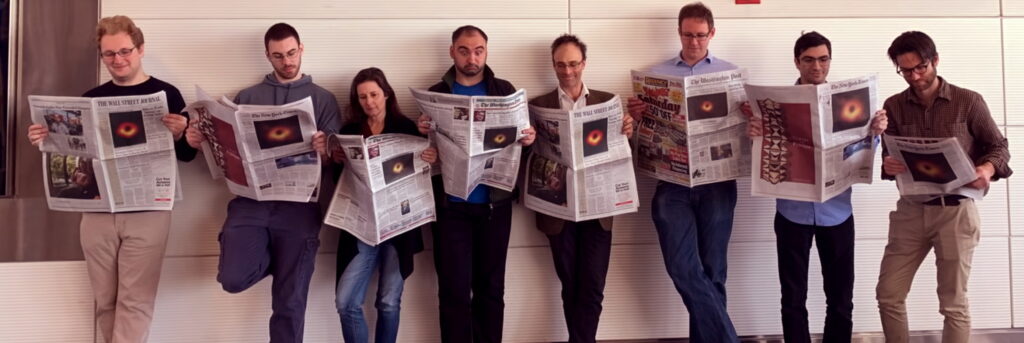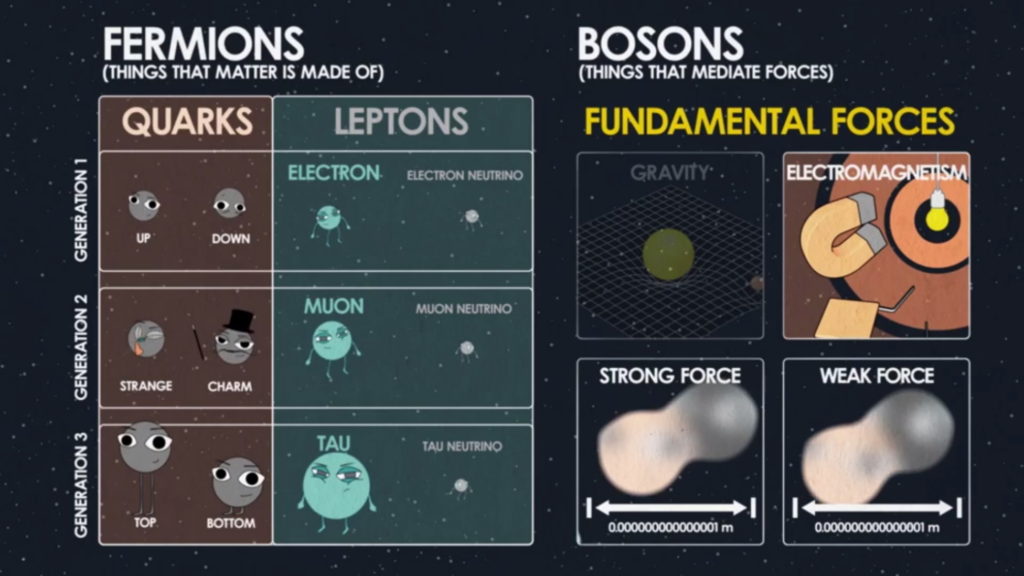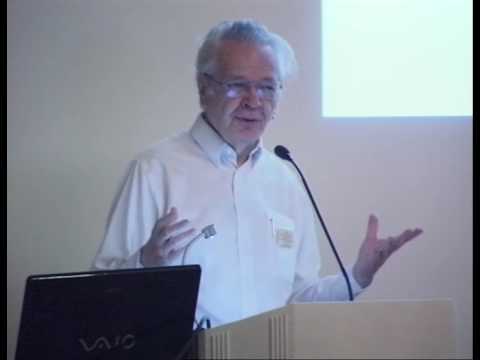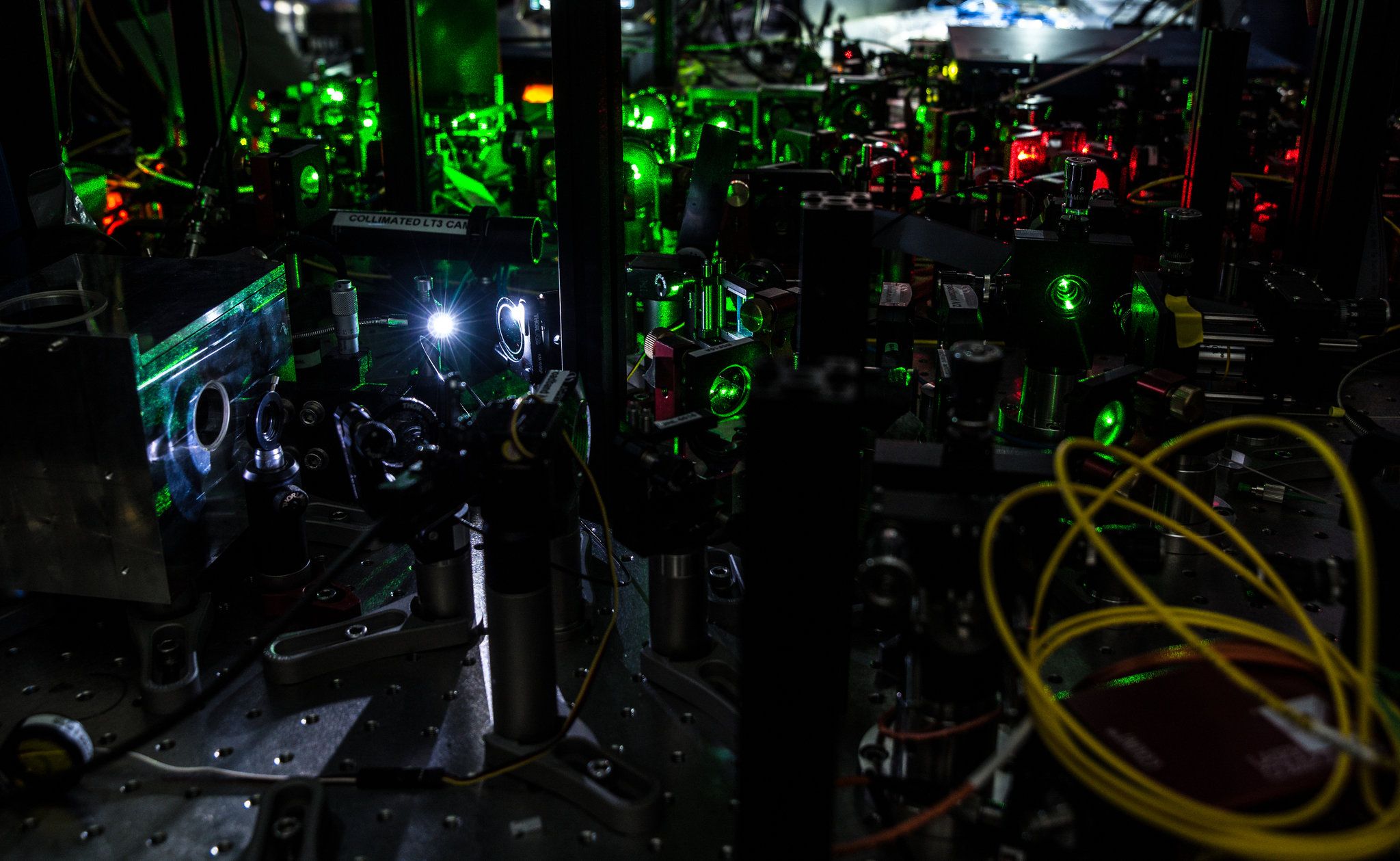Category: general relativity

Stunning 1st image of Black Hole
Yesterday (Sep 5, 2019), the Breakthrough Prize Foundation awarded $21.6 million US dollars to the scientists behind a stunning achievement. They imaged a black hole. Although the image was announced and released 5 months ago, the story is still unfolding.
Yesterday (Sep 5, 2019), the Breakthrough Prize Foundation awarded $21.6 million US dollars to the scientists behind a stunning achievement. They imaged a black hole. Although the image was announced and released 5 months ago, the story is still unfolding.
The Breakthrough Prize is funded by Russian-Israeli billionaire Yuri Milner. It is the highest-paying science prize for researchers in life science, math, and physics.

Why it is dangerous to build ever larger big bang machines
CERN has revealed plans for a gigantic successor of the giant atom smasher LHC, the biggest machine ever built. Particle physicists will never stop to ask for ever larger big bang machines. But where are the limits for the ordinary society concerning costs and existential risks?
CERN boffins are already conducting a mega experiment at the LHC, a 27km circular particle collider, at the cost of several billion Euros to study conditions of matter as it existed fractions of a second after the big bang and to find the smallest particle possible – but the question is how could they ever know? Now, they pretend to be a little bit upset because they could not find any particles beyond the standard model, which means something they would not expect. To achieve that, particle physicists would like to build an even larger “Future Circular Collider” (FCC) near Geneva, where CERN enjoys extraterritorial status, with a ring of 100km – for about 24 billion Euros.
Experts point out that this research could be as limitless as the universe itself. The UK’s former Chief Scientific Advisor, Prof Sir David King told BBC: “We have to draw a line somewhere otherwise we end up with a collider that is so large that it goes around the equator. And if it doesn’t end there perhaps there will be a request for one that goes to the Moon and back.”
“There

An Introduction to the Future with Oxford VSI
“The Future: A Very Short Introduction” (OUP, 2017) by Dr. Jennifer M Gidley.
Oxford University Press has just released a wonderful little animation video centring on my book “The Future: A Very Short Introduction” published in 2017. In an entertaining way it shows how the concept of the future or futures is central to so many other concepts — many of which are the subject of other OUP Very Short Introductions. The VSI Series now has well over 500 titles, with ‘The Future’ being number 516.
To watch the video click here.
You can read a full sample chapter of the Introduction. The abstracts can be read for all of the other chapters at the links below.
Contents
List of Illustrations
1 Three Thousand Years of Futures
3 The Evolving Scholarship of Futures Studies
4 Crystal Balls, Flying Cars and Robots
5 Technotopian or Human-Centred Futures?
6 Grand Global Futures Challenges
References
Further Reading & Websites
Appendix: Global Futures Timeline
Index
The book is available to purchase at OUP.
‘The Future’ has been very well received globally and an Arabic translation has recently been released by the Bahrain Authority for Culture and Antiquity.
The Arabic translation of ‘The Future’ will be available in all book fairs in the Arab region and the distributor covers the important libraries in all Arab countries and Saqi books/UK and Jarir book store/USA . It can also be purchased through the following:
A Chinese translation has been licensed and is underway, and discussions are in process for translations into German, Turkish, Italian and French.

Does Mystery of Quantum Physics Prove God Exists?
Ironically, my more popular posts are ones furthest from my passion and core interests. They are larks—never intended to go viral. This is about one of them…
Apart from family, I typically steer clear of religious topics. I identify with a mainstream religion, but it is completely beside the purpose of Lifeboat Foundation, and it is a personal affair.[1]
Yet, here we discuss a religious topic, after all. Let’s get started…
Question
Do atheists agree that the fact that we can’t understand
quantum physics is at least somewhat evidence of Allah?
An Objective Answer
Do you assert that a failure to understand something is evidence of God?
I don’t fully understand a triple-Lutz (ice skating) or the Jessica stitch (needlepoint)—and I certainly don’t get why an electric dryer leaves moisture on light weight linens, when a gas dryer gets them bone-dry before the plush towels.
Is my inability to solve these mysteries evidence of Allah (or Yahweh, haShem or Y’Shewa)? Of course, not! It has nothing to do with God or religion. The fact that I don’t quite grasp every complex task or unexplained science is not evidence of God, it is evidence of my own ignorance.
On the other hand, I am fortunate to understand quantum physics—both academically and from an innate perspective. That is, behavior of waves and matter on a subatomic scale make perfect sense to me.
You would be correct to point out that certain quantum behavior seems to violate common sense:
- Probabilistic behavior. (i.e. Schrödinger’s cat is both dead and alive at once)
- Measure photons or electrons as a wave, and it no longer behaves like particles
- Entangled electrons (Einstein called it ‘Spooky action at a distance’)
- The EPR Paradox (entanglement experiment demonstrates causality based on future knowledge. It seems profoundly unbelievable!)
 But these things only seem strange, because we do not experience them first hand given our size and our senses. As the math and the mechanisms are understood through research and experimentation, the behavior begins to fit within physical laws as we understand them. Then, we can extrapolate (predict) other behaviors.
But these things only seem strange, because we do not experience them first hand given our size and our senses. As the math and the mechanisms are understood through research and experimentation, the behavior begins to fit within physical laws as we understand them. Then, we can extrapolate (predict) other behaviors.
For example, as we begin to understand quantum mechanics, we can design a computer, an encryption mechanism—and eventually a teleportation system—that exploits the physical properties and laws.
1 I do not appreciate the outreach of evangelism. In my opinion, religious discussion is best amongst a like-minded community.

Fundamental Particles & Forces: What do we know?
Do you remember all the hoopla last year when the Higgs Boson was confirmed by physicists at the Large Hadron Collider? That’s the one called the ‘God particle’, because it was touted as helping to resolve the forces of nature into one elegant theory. Well—Not so fast, bucko!…
First, some credit where credit is due: The LHC is a 27-kilometer ring of superconducting magnets interspersed by accelerators that boost the energy of the particles as they whip around and smash into each other. For physicists—and anyone who seeks a deeper understanding of what goes into everything—it certainly inspires awe.
Existence of the Higgs Boson (aka, The God Particle) was predicted. Physicists were fairly certain that it would be observed. But its discovery is a ‘worst case’ scenario for the Standard Model of particle physics. It points to shortcomings in our ability to model and predict things. Chemists have long had a master blueprint of atoms in the Periodic Table. It charts all the elements in their basic states. But, physicists are a long way from building something analogous. That’s because we know a lot more about atomic elements than the fundamental building blocks of matter and energy. [continue below image]
So, what do we know about fundamental particles the forces that bind them? HINT: There are 61 that we know of or have predicted and at least two about which we don’t yet have any clue: The pull of Gravity and dark matter / dark energy.
This video produced by the BBC Earth project is an actors’ portrayal of a news interviewer and a particle physicist. If we were to simply watch these two guys talk in front of a camera, it would be pretty boring (unless, of course, the physicist has charm and panache, like the late Richard Feynman or my own Cornell professor, Carl Sagan). So, to spice it up a bit, BBC has added a corny animation of two guys talking with an anthropomorphic illustration of cartoon particles. Corny? Yes! But it helps to keep a viewer captivated. And, for any armchair physicist, the story is really exciting!
See the video here. It takes a moment to load—but for me, the wait is worthwhile.

A Primer for Deterministic Thermodynamics and Cryodynamics
A Primer for Deterministic Thermodynamics and Cryodynamics
Dedicated to the Founder of Synergetics, Hermann Haken
Otto E. Rossler, Frank Kuske, Dieter Fröhlich, Hans H. Diebner, Thimo Bo¨ hl, Demetris T. Christopoulos, Christophe Letellier
Abstract The basic laws of deterministic many-body systems are summarized in the footsteps of the deterministic approach pioneered by Yakov Sinai. Two fundamental cases, repulsive and attractive, are distinguished. To facilitate comparison, long-range potentials are assumed both in the repulsive case and in the new attractive case. In Part I, thermodynamics – including the thermodynamics of irreversible processes along with chemical and biological evolution – is presented without paying special attention to the ad hoc constraint of long-range repulsion. In Part II, the recently established new fundamental discipline of cryodynamics, based on long-range attraction, is described in a parallel format. In Part III finally, the combination (“dilute hot-plasma dynamics”) is described as a composite third sister discipline with its still largely unknown properties. The latter include the prediction of a paradoxical “double-temperature equilibrium” or at least quasi-equilibrium existing which has a promising technological application in the proposed interactive local control of hot-plasma fusion reactors. The discussion section puts everything into a larger perspective which even touches on cosmology.
Keywords: Sinai gas, chaos theory, heat death, dissipative structures, second arrow, Point Omega, Super Life, paradoxical cooling, antifriction, paradoxical acceleration, Sonnleitner numerical instability, dilute-plasma paradigm, two-temperature equilibrium, ITER, MHD, interactive plasma cooling, McGuire reactor, Hubble law, Zwicky rehabilitated, Perlmutter-Schmidt-Riess wiggle, mean cosmic temperature, van Helmont, Lavoisier, Kant, Poincaré, double-faced Sonnleitner map. (August 26, 2016)
Otto E. Rossler, Frank Kuske, Dieter Fro¨ hlich, Thimo Bo¨ hl
Division of Theoretical Chemistry, University of Tübingen, Auf der Morgenstelle 18, 72076 Tu¨ bingen, Germany
Hans H. Diebner
Department of Medical Informatics, Technical University Dresden, Blasewitzerstr. 86,
01307 Dresden, Germany
Demetris T. Christopoulos
National and Kapodistrian University of Athens, Department of Economics, Sofokleous 1 str.,
10509 Athens, Greece
Christophe Letellier
Physics Department, University of Rouen CORIA, Avenue de l’Université, 76801 Saint-Étienne-du-Rouvray, France
Full paper: http://environmental-safety.webs.com/Deterministic_Thermo_Cryo.pdf

Quantum Theory: ‘Spooky Action at a Distance’ confirmed
In one of my first articles for Lifeboat,* I provided an experimental methodology for demonstrating (or proving) the instantaneous ‘communication’ between quantum entangled particles. Even though changes to one particle can be provably demonstrated at its far away twin, the very strange experimental results suggested by quantum theory also demonstrate that you cannot use the simultaneity for any purpose. That is, you can provably pass information instantly, but you cannot study the ‘message’ (a change in state at the recipient), until such time as it could have been transmit by a classical radio wave.
Now, scientists have conducted an experiment proving that objects can instantaneously affect each other, regardless o the distance between them. [continue below]
[From The New York Times—Oct 21, 2015]:
Sorry Einstein.
Quantum Study Suggests ‘Spooky Action’ is RealIn a landmark study, scientists at Delft University of Technology in the Netherlands reported that they had conducted an experiment that they say proved one of the most fundamental claims of quantum theory — that objects separated by great distance can instantaneously affect each other’s behavior.
The finding is another blow to one of the bedrock principles of standard physics known as “locality,” which states that an object is directly influenced only by its immediate surroundings. The Delft study, published Wednesday in the journal Nature, lends further credence to an idea that Einstein famously rejected. He said quantum theory necessitated “spooky action at a distance,” and he refused to accept the notion that the universe could behave in such a strange and apparently random fashion.
[Read John Markoff’s full article in The New York Times]
* The original Lifeboat article—in which I describe an experimental apparatus in lay terms—was reprinted from my Blog, A Wild Duck.

Dwarf Galaxies Loom Large in Quest for Dark Matter
“In its inaugural year of observations, the Dark Energy Survey has already turned up at least eight objects that look to be new satellite dwarf galaxies of the Milky Way.”
Strings Are Dead
In 2014, I submitted my paper “A Universal Approach to Forces” to the journal Foundations of Physics. The 1999 Noble Laureate, Prof. Gerardus ‘t Hooft, editor of this journal, had suggested that I submit this paper to the journal Physics Essays.
My previous 2009 submission “Gravitational acceleration without mass and noninertia fields” to Physics Essays, had taken 1.5 years to review and be accepted. Therefore, I decided against Prof. Gerardus ‘t Hooft’s recommendation as I estimated that the entire 6 papers (now published as Super Physics for Super Technologies) would take up to 10 years and/or $20,000 to publish in peer reviewed journals.
Prof. Gerardus ‘t Hooft had brought up something interesting in his 2008 paper “A locally finite model for gravity” that “… absence of matter now no longer guarantees local flatness…” meaning that accelerations can be present in spacetime without the presence of mass. Wow! Isn’t this a precursor to propulsion physics, or the ability to modify spacetime without the use of mass?
As far as I could determine, he didn’t pursue this from the perspective of propulsion physics. A year earlier in 2007, I had just discovered the massless formula for gravitational acceleration g=τc^2, published in the Physics Essays paper referred above. In effect, g=τc^2 was the mathematical solution to Prof. Gerardus ‘t Hooft’s “… absence of matter now no longer guarantees local flatness…”
Prof. Gerardus ‘t Hooft used string theory to arrive at his inference. Could he empirically prove it? No, not with strings. It took a different approach, numerical modeling within the context of Einstein’s Special Theory of Relativity (STR) to derive a mathematic solution to Prof. Gerardus ‘t Hooft’s inference.
In 2013, I attended Dr. Brian Greens’s Gamow Memorial Lecture, held at the University of Colorado Boulder. If I had heard him correctly, the number of strings or string states being discovered has been increasing, and were now in the 10500 range.
I find these two encounters telling. While not rigorously proved, I infer that (i) string theories are unable to take us down a path the can be empirically proven, and (ii) they are opened ended i.e. they can be used to propose any specific set of outcomes based on any specific set of inputs. The problem with this is that you now have to find a theory for why a specific set of inputs. I would have thought that this would be heartbreaking for theoretical physicists.
In 2013, I presented the paper “Empirical Evidence Suggest A Need For A Different Gravitational Theory,” at the American Physical Society’s April conference held in Denver, CO. There I met some young physicists and asked them about working on gravity modification. One of them summarized it very well, “Do you want me to commit career suicide?” This explains why many of our young physicists continue to seek employment in the field of string theories where unfortunately, the hope of empirically testable findings, i.e. winning the Noble Prize, are next to nothing.
I think string theories are wrong.
Two transformations or contractions are present with motion, Lorentz-FitzGerald Transformation (LFT) in linear motion and Newtonian Gravitational Transformations (NGT) in gravitational fields.
The fundamental assumption or axiom of strings is that they expand when their energy (velocity) increases. This axiom (let’s name it the Tidal Axiom) appears to have its origins in tidal gravity attributed to Prof. Roger Penrose. That is, macro bodies elongate as the body falls into a gravitational field. To be consistent with NGT the atoms and elementary particles would contract in the direction of this fall. However, to be consistent with tidal gravity’s elongation, the distances between atoms in this macro body would increase at a rate consistent with the acceleration and velocities experienced by the various parts of this macro body. That is, as the atoms get flatter, the distances apart get longer. Therefore, for a string to be consistent with LFT and NGT it would have to contract, not expand. One suspects that this Tidal Axiom’s inconsistency with LFT and NGT has led to an explosion of string theories, each trying to explain Nature with no joy. See my peer-reviewed 2013 paper New Evidence, Conditions, Instruments & Experiments for Gravitational Theories published in the Journal of Modern Physics, for more.
The vindication of this contraction is the discovery of the massless formula for gravitational acceleration g=τc^2 using Newtonian Gravitational Transformations (NGT) to contract an elementary particle in a gravitational field. Neither quantum nor string theories have been able to achieve this, as quantum theories require point-like inelastic particles, while strings expand.
What worries me is that it takes about 70 to 100 years for a theory to evolve into commercially viable consumer products. Laser are good examples. So, if we are tying up our brightest scientific minds with theories that cannot lead to empirical validations, can we be the primary technological superpower a 100 years from now?
The massless formula for gravitational acceleration g=τc^2, shows us that new theories on gravity and force fields will be similar to General Relativity, which is only a gravity theory. The mass source in these new theories will be replaced by field and particle motions, not mass or momentum exchange. See my Journal of Modern Physics paper referred above on how to approach this and Super Physics for Super Technologies on how to accomplish this.
Therefore, given that the primary axiom, the Tidal Axiom, of string theories is incorrect it is vital that we recognize that any mathematical work derived from string theories is invalidated. And given that string theories are particle based theories, this mathematical work is not transferable to the new relativity type force field theories.
I forecast that both string and quantum gravity theories will be dead by 2017.
When I was seeking funding for my work, I looked at the Broad Agency Announcements (BAAs) for a category that includes gravity modification or interstellar propulsion. To my surprise, I could not find this category in any of our research organizations, including DARPA, NASA, National Science Foundation (NSF), Air Force Research Lab, Naval Research Lab, Sandia National Lab or the Missile Defense Agency.
So what are we going to do when our young graduates do not want to or cannot be employed in string theory disciplines?
(Originally published in the Huffington Post)

